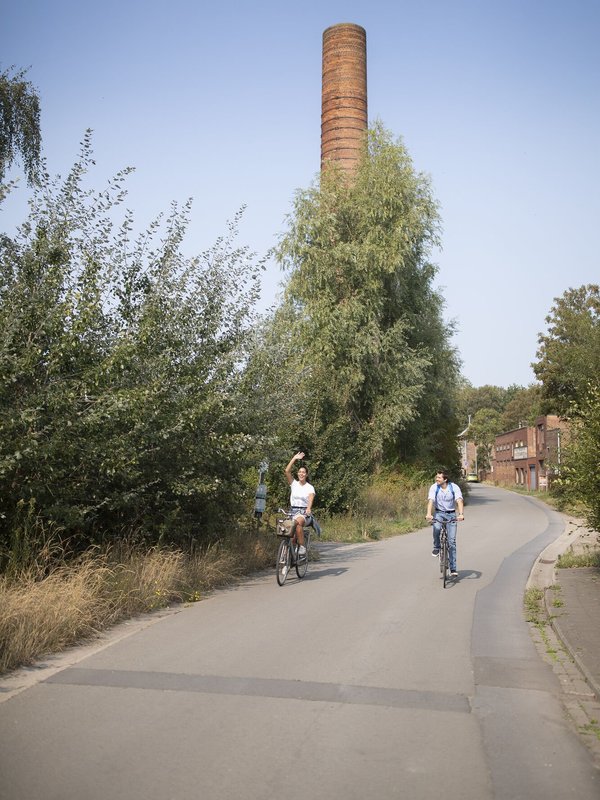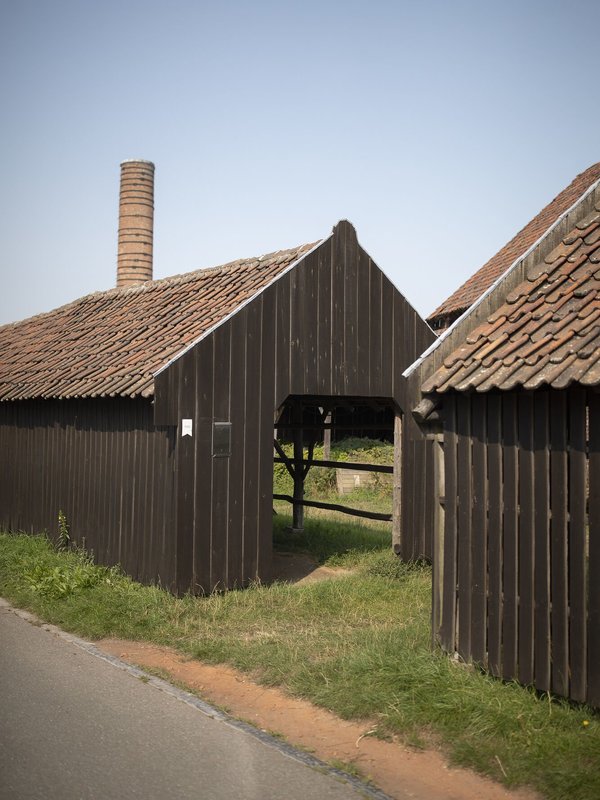Brickland Scheldeland
Dive into the illustrious past of the brick-making industry along the river Rupel
For decades, the Rupel region was the epicentre of the brick industry. Brick factories stood side by side on the banks of the river, and their high towers stood proud in the landscape.
This is where the lively communities flourished who rolled out world famous bricks and roof tiles from their factories. The 'Boomse Pan' is still a reference in the industry and continues to survive the test of time.
A region in evolution
But what once shone then faded. The old industries hit hard times. And one by one the brick factories shut down.
The Rupel region was forced to reinvent itself, in order to survive. And it did a remarkable job. The chimneys, depots and factories of the day are now part of a rich landscape that has been transformed into a tourist attraction.
Looking for a second wind
Therefore, the once so powerful industry is the foundation for the region's cultural revival. The remaining brick factories have been given a second chance as heritage locations, with lots of museums to guide you through the history.
Here you can come and experience the rise and demise of the brick factories for yourself. Taking account of the craftsmanship, the hard work and the impact of this industry on the region and its residents.
4 great addresses in the Rupel region
With this list of 4 unique sites and museums you will witness the unique tale that shapes the Rupel region for yourself. Of course, before or after your visit, you can also wander through the pleasant villages along the Rupel – which is always worthwhile.
Brik Boom in Boom
Brik Boom (the former EMABB) has been illuminating the exciting brick industry in the Rupel region for as many as 30 years. Join us on a journey through Boom and Noeveren and marvel at the unique industrial heritage. For two hours you experience what life was like in days gone by and how the industry made its mark on these villages.
Wander into a typical labourer's home, see a fun introduction film and follow the production process from of the bricks from Boom - from clay all the way. Naturally, the social history is also given a prominent place in the story.
’t Geleeg in Boom
In the entire Rupel region, only one brick factory has been fully preserved and restored: Frateur Brick Factory. During a guided tour in ’t Geleeg you discover how hand bricks and roof tiles were once shaped. You witness the entire production process: making, drying and baking. The dry depots are impressive and guide you towards the clamp oven and ring oven.
Walk further along the labourers' cottages and enjoy the panoramic views fo the brick factory domain - and the surrounding landscape.
Rupelklei Museum in Terhagen (Rumst)
The former brick factory De Beuckelaer was a successful enterprise in its day. Today, it forms the background for the story of all brick factories in the Rupel region. Resident writer from Terhagen Piet Van Aken wrote the stories for this exciting exhibition. You will be carefully guided through the entire brick manufacturing process. Incredibly exciting! The life-size dummies that you can see in the museum give everything an extra dimension.
Gilliot & Roelants Tile Museum in Hemiksem
The rich history of the Rupel region goes beyond bricks alone. Joseph Roelants spent the first half of the last century working as a designer for the ceramic factory Gilliot & Cie. This tile factory produced countless premium products and reached a wide audience in its day. In its heyday it employed over 1,500 people, and more than 400,000 tiles rolled off the line each day. However, even this successful firm was unable to resist the economic storm in the 1970s. The last tiles were baked here in 1978.
35 years on, the history of the tile factory and its most famous designer is now immortalised in a unique museum. You can discover all the details and stories from the factory during an exciting guided tour.
Visit the Rupel region too
The Rupel region has so much to offer. The lively history of the brick-making villages fire the imagination. Explore these fascinating stories in one of our 4 heritage tips!



